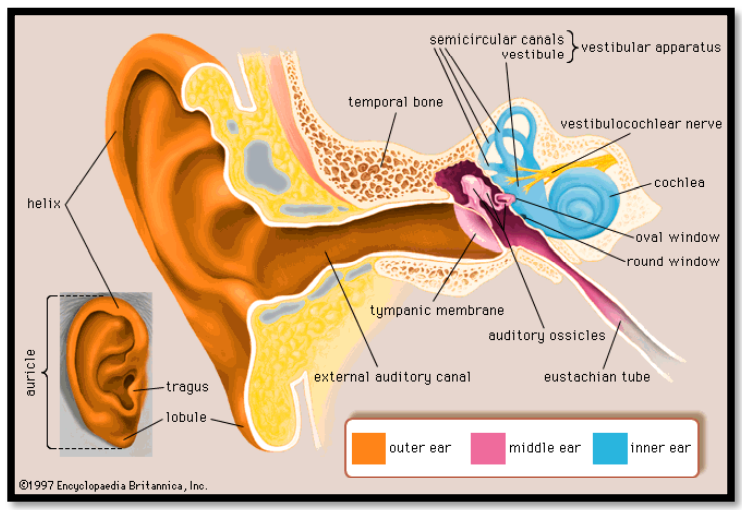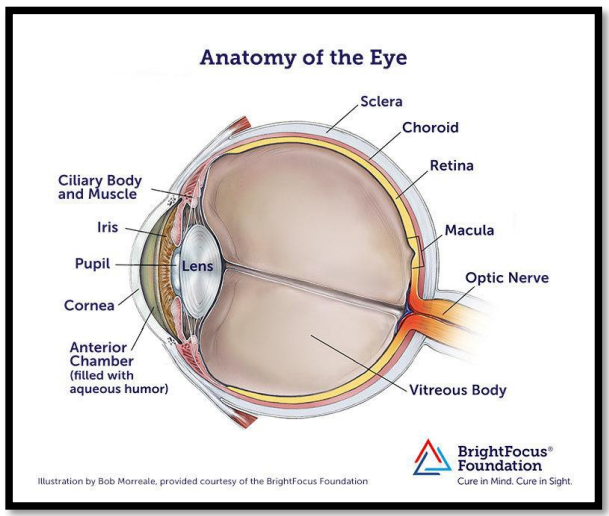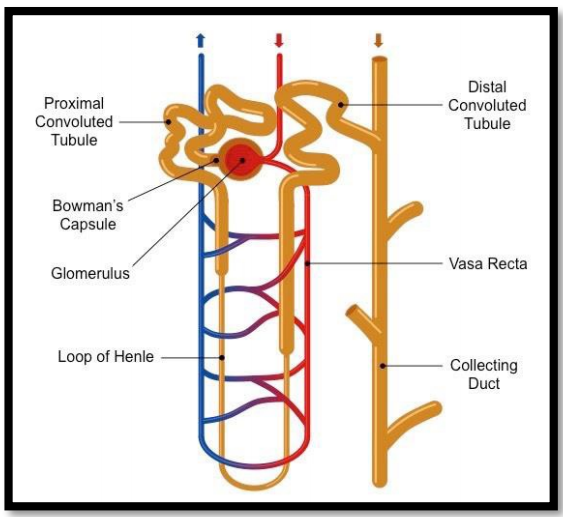On your way to Biology mastery? Enrol in our 99.5 studyscore masterclass. Click here!
Inquiry Question 5: How can technologies be used to assist people who experience disorders?
Content Descriptor: Explain a range of causes of disorders by investigating the structures and functions of the relevant organs, for example:
Hearing loss: (8.5.1)
Structure and function of ear:
Outer ear:
- Pinnacollects sound from the environment
- Auditorycanal channels waves into the ear
- Ear drum vibrates, transmitting sound waves to middle earMiddle ear:
- Ossiclestogether serve to amplify the sound waves
- Eustachian tube connects middle ear to nose and throat allowing mucous to drainInner ear:
- Ovalwindow has vibrations transferred from the middle ear
- Cochleaand organ of Corti transform vibrations in hair cells to electrical signals
- Semicircularcanals detect balance rather than sound
Auditory nerve transmits information to brain

Ailments of the ear:
Caused by damage or blocking of the structure of the ear Glue ear:
- Build-up of mucous in middle ear preventing ear drum vibratingSwimmers ear:
- Exposureto heat and moisture
- Swellingof skin layer in auditor canal
- Prevents sound from being transmittedMeniere’s disease:
- Excessivebuild-up of fluid in inner ear
- Burstscausing vertigo and hearing loss
Visual disorders: (8.5.2)
Structure and function of the eye:
External eye:
- Conjunctiva– Mucous membrane that keeps the eye moist
- Cornea– Keeps shape of the eye and begins refracting light
- Iris – Coloured muscle which contracts to changes the amount of light let into the eyeRefractive elements:
- Lens– Flexible transparent bulb which can be pulled to change the amount of refraction
- Ciliarybody – Contracts to change shape of lens
- Aqueoushumour – Between lens and cornea
- Vitreous humour – In eyeball cavityReceiving layers
- Sclerais outer coat of Protects and maintains shape
- Choroid– Between retina and sclera, nourishes the layers
- Retina– Photoreceptive layer with rods and cones

Ailments of the eye:
Damage to the structure or blocking light from entering the eye. Myopia:
- Shortsightedness, image falls in front of retina
- Lens is too thick or cannot flatten enoughHyperopia:
- Farsightedness, image falls behind the retina
- Lens is too thin and cannot refract light enoughCataracts:
- Painlesssight defects causing a blurring of vision on the lens
Loss of kidney function: (8.5.3)
Structure and function of the kidney:
Excretion:
- Some fluid gets squeezed out under high pressure in the glomerulus (prevent protein and largemolecules)
- Proteincannot move through
- Waste is removed and not re-absorbedOsmoregulation, salt balance, blood pressure:
- Loopof Henley arranged down towards the medulla
- Removesexcess salts which in turn lowers blood pressure
- Reabsorb crucial waterAids homeostasis through:
- Selectivereabsorption
- Secretionof foreign material not required



Ailments of the kidney:
- Kidneystones
- Diabetes– Kidney damage and damage to glomerulus
- Infectionof inflammation of glomerulus
Content Descriptor: Investigate technologies that are used to assist with the effects of a disorder, including but not limited to:
Hearing loss: cochlear implants, bone conduction implants, hearing aids: (8.5.4)
Cochlear Implant:
- Involvesan external sound processor and an implant in place of damaged cochlear cells
- Vasthearing improvement
- Risksassociated with the implant surgery
- Expensiveand requires maintenance
Bone conduction Implant:
- Alternativeto hearing aids
- Internaland external component
- Similarto hearing aid except it bypasses the middle ear and conducts sound through bone
- Goodfor single ear hearing loss
- Moreexpensive than hearing aids and involve surgery
Hearing aid:
- Amplifiesthe sound
- Cheapbut not extremely effective
Visual disorders: spectacles, laser surgery: (8.5.5)
Spectacles:
- Cheapcurved lenses which change the focal distance, causing sharper images
- Concavefor myopia and convex for hyperopia
- Canbe broken and some people do not like glasses
Laser surgery:
- Useslasers to shape the cornea to change focus
- Expensivebut can prevent the need for glasses
Loss of kidney function: dialysis: (8.5.6)
Haemodialysis:
- Performedin a home or centre and done three times a week
- Needles used to access the blood and it is taken through a specialised filter which cleans theblood (dialyser)
- Travelingto hospitals may be expensive and time consuming and the procedure performed at home has risk of infection
Peritoneal:
- Popular methodsince it does not involve journeying to the hospital
- Catheteris placed in the stomach
- Canbe done during the day or overnight
- Fluidfills the cavity and is then used to clean the blood
Transplant:
- Receivea living or deceased donor
- Havean operation to receive the kidney
- Moresuited to younger patients
- Maybe expensive for both involved since care time is lengthy
Content Descriptor: Evaluate the effectiveness of a technology that is used to manage and assist with the effects of a disorder: (8.5.7)
Evaluate the effectiveness of spectacles for treatment of hyperopia and myopia:
The purpose of the eye is to collect and redirect light into the retina, where it can be changed into chemical signals and sent to the brain. The lens is a crucial part of this process, its flexible body able to contract or release via pull from the adjacent ciliary body. This accommodation allows for light of different distances to be focused sharply on the retina for clear vision.
In age, these ciliary muscles may become weak, or the lens may become misshapen, leading to myopia or hyperopia. If the lens is not stretched enough, if will refract light too much, causing the focus of light to fall in front of the retina, known as myopia or short-sightedness. Conversely, if the ciliary muscles weaken, the lens will not be able to stretch enough, causing the light to fall behind the retina; hyperopia or short-sightedness.
Spectacles may be used to treat both of these conditions. Convex lenses can be used to increase refraction and thus treat hyperopia, while concave lenses may be used for myopia. Spectacles are easily available if they are non-prescription and if so, are also quite cheap. However, prescription lenses may be very costly. While spectacles are effective in treating the conditions, they are only effective while being worn, and may be inconvenient to carry on person at all times. An alternative to this is laser eye surgery, which permanently alters the shape of the cornea to increase or decrease refraction of light. This is permanent, meaning the benefit will stay with the treated individual, however, mistakes may also adversely affect vision. Furthermore, these surgeries may be extremely expensive.
Overall, spectacles are effective in treating myopia and hyperopia as they are effective and cheap. However, for aesthetic or convenience purposes, it may be beneficial to consider alternatives such as laser eye surgery.




